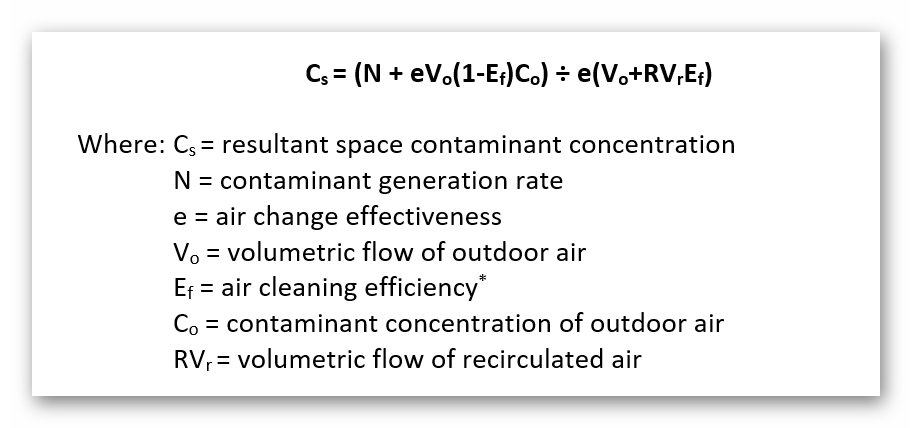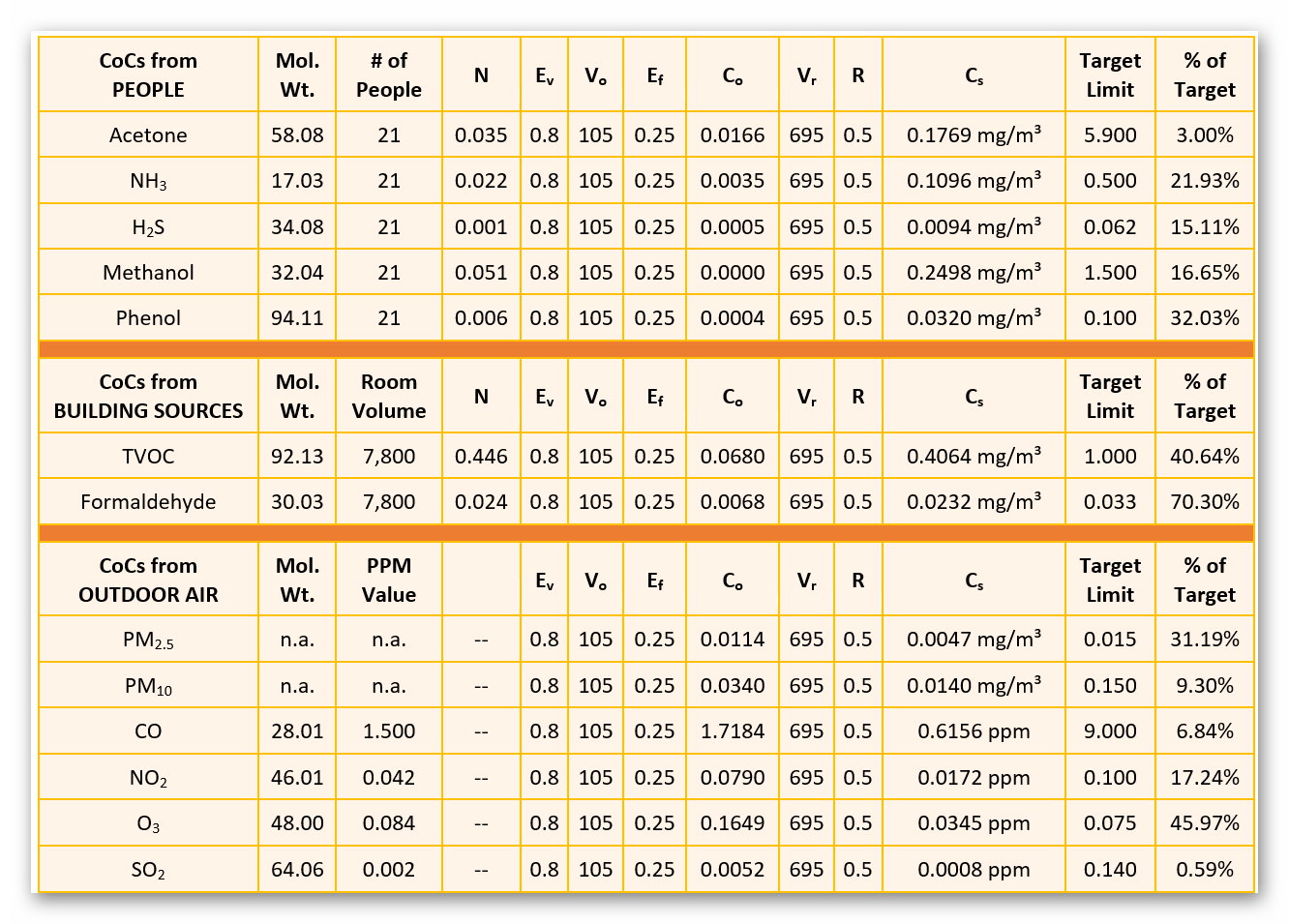Prestigious Prep School Achieves LEED Gold Certification with Help from Purafil
The School
Woodward Academy, the largest independent, co-educational college-preparatory day school for grades pre-kindergarten to 12 in the continental U.S. is located in the Atlanta (GA) metropolitan area. Its current enrollment of 2,700 students is divided into five different schools on two campuses.
The Main Campus is located in the south Atlanta suburb of College Park and consists of Primary, Lower, Middle, and Upper schools:
-
- Primary School has students in pre-K through 3rd grade,
- Lower School has 4th through 6th grade students,
- Middle School has 7th and 8th grade students, and
- Upper School has students in 9th grade through 12th grade.
The Second Campus is located in the city of Johns Creek on the north side of Atlanta and serves pre-K through 6th grade.
The Project
“Provide state-of-the-art facilities that foster a nurturing, productive, and safe community for all constituents.“Part of the school’s 15-year Master Campus Plan was to replace an existing classroom building from the 1950s with a new state-of-the-art learning space. The new Upper School Humanities Building, was a major expansion at a cost of about $26 million. Jane Woodruff Hall would be situated at the campus’s front door,” therefore, one of the primary design drivers was to maintain the style and character of the original building.
The Plan
An existing classroom building was to be demolished to make way for the new humanities building and the primary design requirement from the Administration for the new classroom building was to achieve a Gold certification under the United States Green Building Council’s (USGBC) Leadership in Energy and Environmental Design, or LEED, program.
At the project’s start, there were four USGBC LEED certified buildings at Woodward Academy: Math and Science building – LEED Gold, Middle School campus, 3 buildings – LEED Silver. There were no specific targets for any of the specific LEED credit categories (sustainable sites, water efficiency, energy & atmosphere, materials and resources, indoor environmental quality, innovation in design, regional priority), only that the design, construction, and operation of the building align itself with Woodward Academy’s priorities on sustainability.
Sustainability at Woodward Academy is multi-faceted. Energy saving measures included temperature controls on all buildings, campus-wide set points, and several buildings that used geothermal wells for heating and cooling.
During construction, students were moved to portable classroom “cottages” that occupied the land where new geothermal wells had been planned. Because the portable classrooms could not be moved until the new classroom building was ready to be occupied, the land available for a new well field did not have sufficient capacity and the cost of installing the required number of new wells was prohibitive. Consequently, the design team opted to use LEED Pilot Credit 68: Indoor Air Quality Procedure to reduce the overall load on the well field, provide for capital cost savings, and ongoing energy savings.
The Design
At 101,297 square feet (9,411 m2), Jane Woodruff Hall would be a 3-story educational facility that includes computer labs, numerous classrooms, a lecture hall, and an atrium for student gatherings. It would be the largest building on campus housing Upper School English, World Languages, and Social Studies departments as well as the Upper School administration. It would include a 150-seat lecture hall, counseling offices, and computer and world language labs.
“Houston, we have a problem!”
The original plans called for the use of geothermal wells and heat pumps for heating and cooling of the new classroom building. A geothermal heat pump or ground source heat pump (GSHP) is a central heating and/or cooling system that transfers heat to or from the ground. It uses the earth as a heat source (in the winter) or a heat sink (in the summer). This design takes advantage of the moderate temperatures in the ground to boost efficiency and reduce the operational costs of heating and cooling systems.
The geothermal well field was to be sized to handle the cooling load for the building which required a total of 128 new wells. However, the cost of this many wells was prohibitive within the construction budget. And even if the costs could be adsorbed into the budget, there was still the issues of the portable classroom cottages occupying the land where the geothermal well field would have been located. These cottages could not be moved until after construction was completed.
“Houston, we might have a solution!”
The HVAC design for this project called for the use of water source heat pumps (GSHPs) to serve individual zones which required a total of 94 GSHPs for classrooms. Preconditioned air to each zone would be provided by two roof-top units (RTUs) serving as dedicated outdoor air systems (DOAS). However, without the option of being able to install of the wells required for the heating and cooling requirements of the new building, the engineering design team had to come up with viable options.
One potential solution that was presented was to size well field just for the heating load. This would reduce the number of wells required from 128 to 64. Cooling towers (90 tons total) would be added to augment for peak load cooling in July and August, and no boiler would be required for supplemental heating. However, even with these changes, the construction budget was exceeded. The engineering team needed to find a way to further reduce the overall cost of the HVAC system.
The Solution
Along with the reduction in the number of geothermal wells, the team also considered how they might be able to reduce the amount of outdoor ventilation air required (CFM / person) in order to downsize HVAC system components. The two rooftop RTUs required large outdoor air ducts to be used around the building and the owner required GSHPs in every room. This requirement meant that physical ductwork had to be run to each GSHP. However, if lower air flows could be used, this would allow for the use of smaller ductwork and flexible space utilization in the building plenum. They could also look at reusing normally exhausted air and the use of enhanced filtration to clean and recirculate toilet exhaust back into the building supply air.
LEED Pilot Credit.
The USGBC’s updates to the LEED green building program include various updates to credits within the LEED Pilot Credit Library. The Pilot Credit Library was established to facilitate the introduction of new prerequisites and credits to LEED through stakeholder engagement and collaboration on the testing and analysis of proposed requirements. As a flexible, interactive mechanism for testing proposed credits in the marketplace, the Pilot Credit Library gathers real-time feedback on credit usability and ability to meet a credit’s intent. This process allows USGBC to refine credits through LEED project evaluations before being introduced into LEED.
The LEED Pilot Credit that allowed for a reduction in the required amount of outdoor air ventilation rates for a new construction project was an alternative to the Indoor Environmental Quality Prerequisite 1 (IEQp1) that establishes the minimum indoor air quality performance to enhance indoor air quality in buildings, thus contributing to the comfort and well-being of the occupants.
LEED Indoor Environmental Quality EQpc68 – Indoor Air Quality Procedure, required that the HVAC system meets the minimum requirements of ASHRAE Standard 62.1, Sections 4 through 6, Ventilation for Acceptable Indoor Air Quality. Further, the minimum outdoor air intake flow for mechanical ventilation systems would be determined using the Indoor Air Quality Procedure (IAQP), or a local equivalent, whichever was more stringent, would meet the following requirements for ventilation systems designed in accordance with Section 6.3 IAQ Procedure.
- Contaminant Sources. Identify the outdoor sources, indoor sources, and the expected emission rate for each of the contaminants and mixtures of concern listed in Table 1. Additionally, confirm that the top 10 contaminants by concentration in the building, as identified by mass spectrograph analysis, are included in Table 1. If they are not already included in Table 1, list them.
- Contaminant Concentration. Refer to Table 1 for maximum allowable concentration limits for each contaminant of concern.
- Perceived Indoor Air Quality. At least 80% of observers or occupants must determine the perceived indoor air quality to be “acceptable” using a Subjective Evaluation.
- Design Approach. Use mass balance analysis. Determine minimum outdoor airflow rates per steady-state mass-balance in Appendix D of the standard. Project teams using a similar zone as allowed in ASHRAE 62.1, must demonstrate that the similar space selected also complies with all requirements of this prerequisite. If non-dilution air cleaning technology is utilized, use air cleaning technology consisting of sorptive active agents, in accordance with ASHRAE Standard 145.2-2011, Laboratory Test Method for Assessing the Performance of Gas-Phase Air-Cleaning Systems: Air Cleaning Devices. Electronic air cleaning technology cannot be used.
- Air Testing. Conduct contaminant-level testing for each of the contaminants of concern.
- Subjective Evaluation. Complete the following tasks prior to occupancy and post-occupancy.
- 60 tons of cooling and 200+kW of heating to get to neutral conditions.
- Equipment cost savings: $50,000
- Able to cut 60 tons of cooling from the geothermal field.
- Geothermal well savings of $150,000 – $180,000.
- Classrooms went from 13-19 cfm (22-32 CMH)/person to 5 cfm (8.5 CMH)/person.
- Engineering estimate of $2.00 – $3.00 in energy savings per CFM.
- Outdoor air ventilation rates were decreased by as much as 75% in classrooms.
- IAQ was improved due to direct control of airborne contaminants through the use of enhanced air cleaning using the Purafilter combination particulate + chemical filters.
ASHRAE 62.1.
Before LEED Pilot Credit EQpc68 was available, there was only one option available for the design of a building’s mechanical ventilation systems under the LEED program, that being the Ventilation Rate Procedure (VRP) from ASHRAE Standard 62.1. The VRP had to be used to determine the minimum dilution ventilation rate required for design. The use of the IAQP was not allowed, which could allow for a balance to be struck between IAQ and energy conservation.By meeting the requirements of the IAQP, one could take credit – in the form of a reduction of the outside air intake rate(s) – for the application of validated air cleaning technologies that result in indoor contaminant concentrations equal to or lower than those achieved using the VRP, or ventilation alone. The IAQP has been and continues to be successfully used in commercial buildings to lower outdoor air intake rates thereby reducing the up-front capital costs for HVAC equipment, lowering HVAC system energy requirements, and most importantly, improving IAQ.
Now with the LEED Pilot Credit available, the IAQP can be used in buildings seeking LEED or similar certifications and help qualify for credits under IAQ, energy conservation, design innovation, and other categories. However, on this project the primary driving force behind the use of the IAQP was to reduce the construction budget by downsizing the HVAC equipment and ancillary materials. The energy savings possible when using the IAQP would be considered an added bonus.
The primary section of the IAQ Procedure that would be applied on this project was Section 6.3.4.1: Mass Balance Analysis. The mass balance equation shown here was taken from INFORMATIVE APPENDIX D: Acceptable Mass Balance Equations for Use with the IAQ Procedure.

For the HVAC system design, each room was treated as a single zone, and the input values for the calculations were industry averages for similar applications and local EPA data. An example of the results of the mass balance analysis is shown for one of the classrooms (Room 124 – History) in the table below.In this example, the IAQP required a modeling contaminant sources and generations rates from people, the building and its contents, and outdoor air. Target limits were obtained from peer-reviewed studies and the mass balance analysis would show whether the resulting contaminant concentrations in the occupied spaces were lower than the target limits at a given air flow. The results shown in the table indicated that using the specific design criteria, all of the contaminants of concern (CoC) would be below their target limits – with many at well less than 50% of these limits. With this validation, the project was able to move forward using the IAQP.

The Results
Economic Impact. The use of the IAQP allowed for a reduction of outdoor air to the building of approximately 15,000 CFM (25,500 CMH) and resulted in the following cost savings:
HVAC Equipment
Geothermal Heating / Cooling
Operational SavingsEven though the capital cost drivers outweighed the requirement for operational savings, Woodward Academy still benefited from the use of the IAQP.
IAQ Impact
Two independent air quality testing laboratories were used to accommodate the number of monitoring locations (9) and the analyses required with the use of the LEED Pilot Credit EQpc68. Because classrooms took up most of the building’s square footage, multiple classrooms were tested. Different use areas were also tested including faculty break rooms, office space, a computer room, the atrium, and a lecture hall.
Air monitoring results indicated that almost all contaminants were below the analysis detection limit. Of those that were detected, formaldehyde was higher in 2 locations, isopropyl alcohol in 9, toluene in 7, and trichloroethylene in 2. This was not a cause for concern because all of these were below the target concentrations used in the mass balance analysis and/or those specified in the LEED Pilot Credit.
Additionally, members of the Faculty participated in an air quality survey where they stayed in rooms for 20-30 minutes prior to completing anonymous surveys. All reported the perceived air quality as acceptable or good in all instances which met the criteria of the LEED Pilot Credit.
Purafil’s Purafilter combination chemical/particulate filters were used in each of the RTUs and the GSHPs. This was a total of 175 filters that provided a MERV 8 rating for particulates and used Purakol brand activated carbon and Purafil SP media for the volatile organic compounds (VOCs), sulfur and nitrogen oxides, ozone, formaldehyde and other site-specific contaminants.
The particulate matter collected on the Purafilters was submitted for analysis and identification (when possible), and the results indicated that the particulate from the upstream side of the filter consisted primarily of cotton fibers (70-80% by volume), skin cells (15-25% by volume), synthetic fibers (1-5% by volume) and plant material (less than 1-2% by volume). Trace amounts (less than 1% by volume) of fungal material, hair, paper fragments, construction debris, starch, rust/metal flakes and feather fragments were present. The presence of soot that would have indicated motor vehicle exhaust emissions could not be confirmed. This testing suggested that much of the particulate matter in the air had sources inside the building which was not unexpected based on the reduction in the outdoor air ventilation rates allowed when using the IAQP.
Conclusions & Takeaways
The school’s new humanities building, Jane Woodruff Hall, received Gold Certification from the U.S. Green Building Council’s Leadership in Energy and Environmental Design program on April 20, 2016. The building, which opened the following August became the second campus building to qualify for Gold LEED status. Although not a consideration in the original building design, the end result of using the IAQ Procedure was a more efficient HVAC system with lower overall energy consumption.
The use of the IAQ Procedure on this project provided for both capital and operational cost savings although the primary driver for this project was reduction of capital costs – not energy savings. This project proved that the IAQP is a valid and viable HVAC design method for use on LEED projects and its use contributed to LEED points in the categories of Energy and Atmosphere (EA) and Indoor Environmental Quality (EQ). and in addition to achieving a LEED Gold certification, the use of the IAQP and enhanced filtration for both particulate and gaseous contaminants provided better air quality due to the direct control of these contaminants as opposed to the indirect control afforded when using the Ventilation Rate Procedure.
Contact Purafil to learn how we can help you achieve LEED gold certification.
